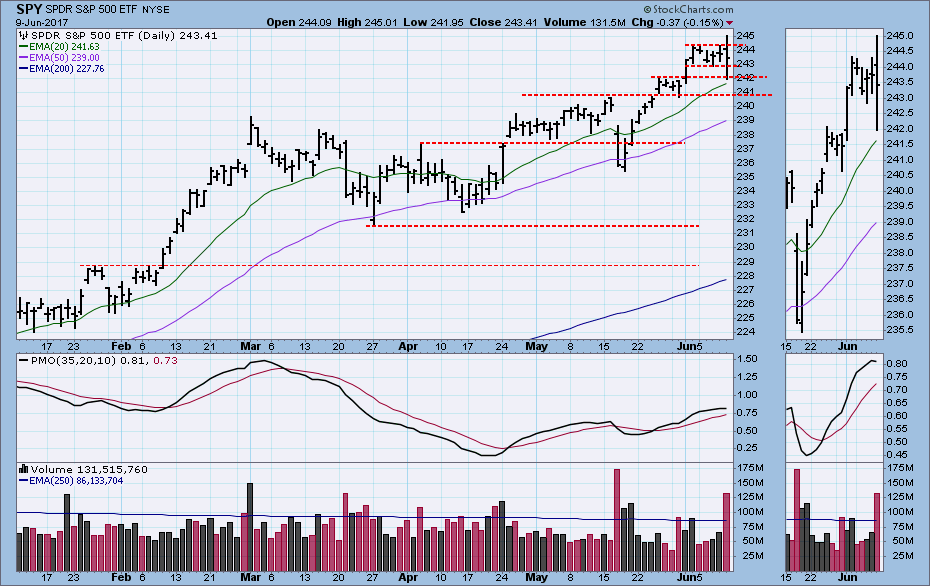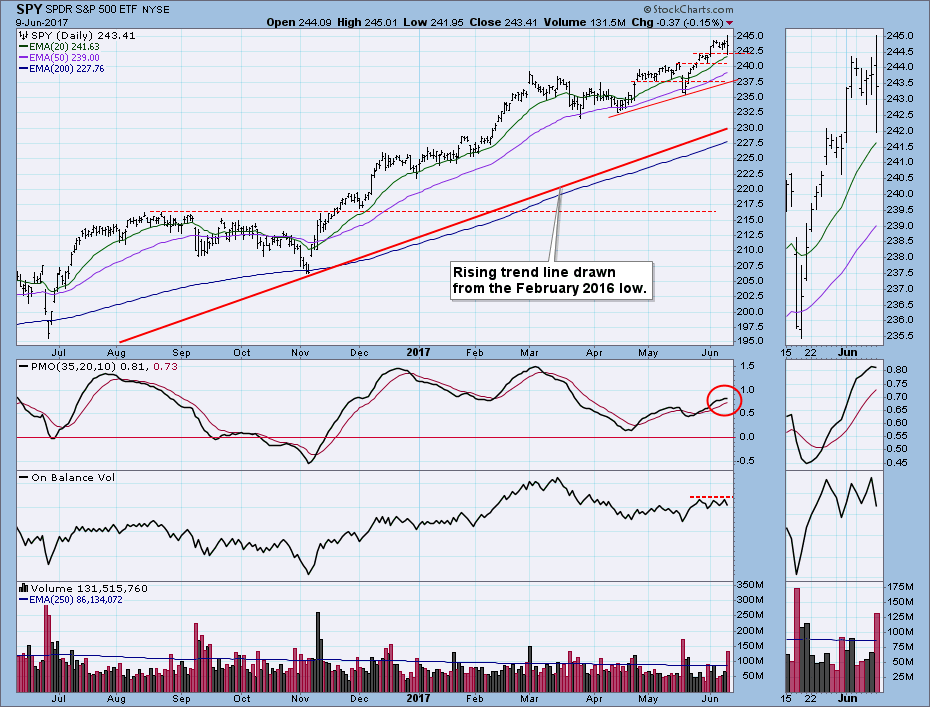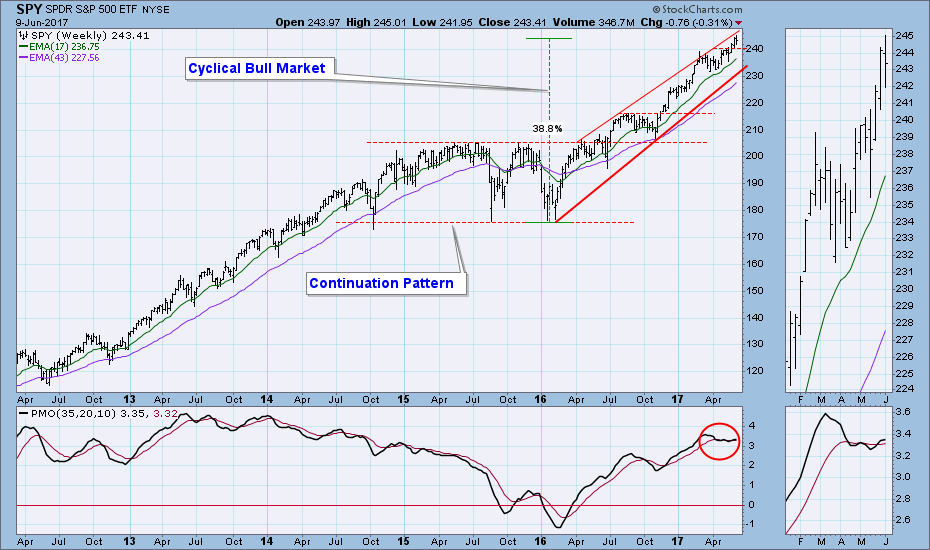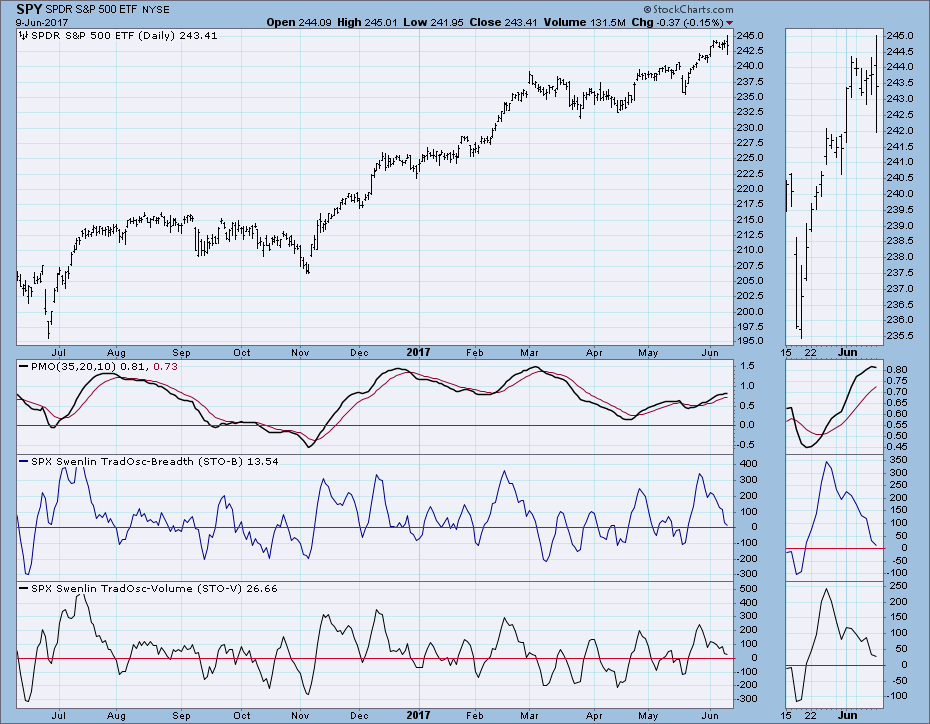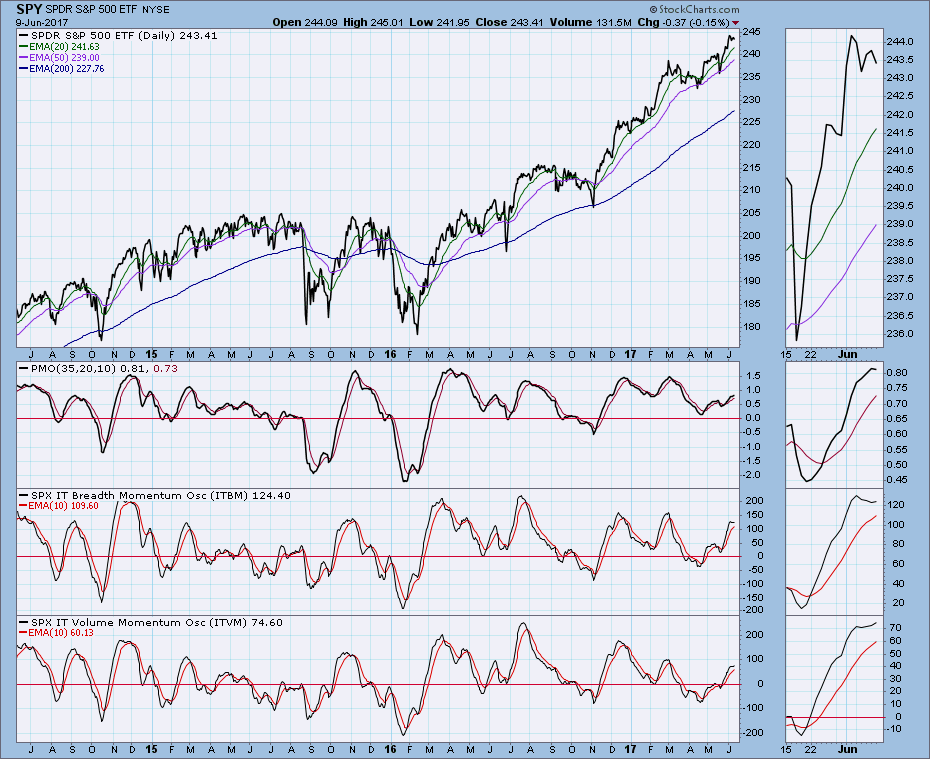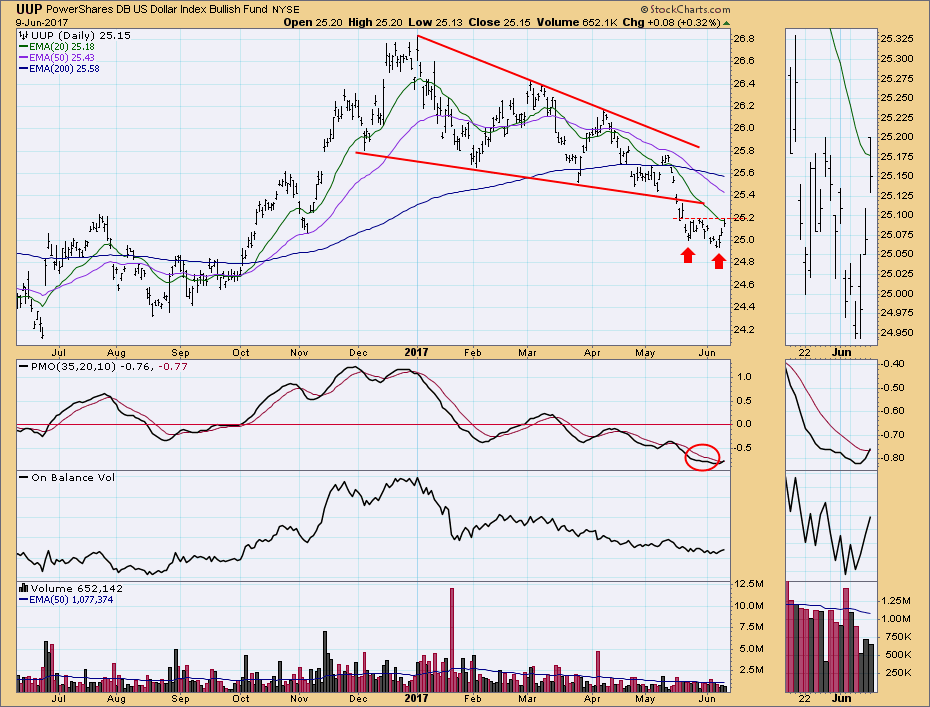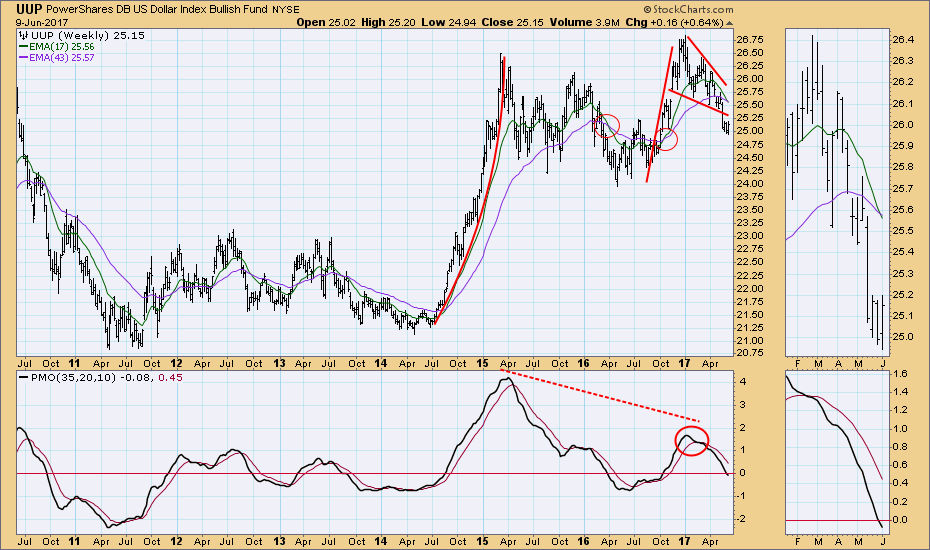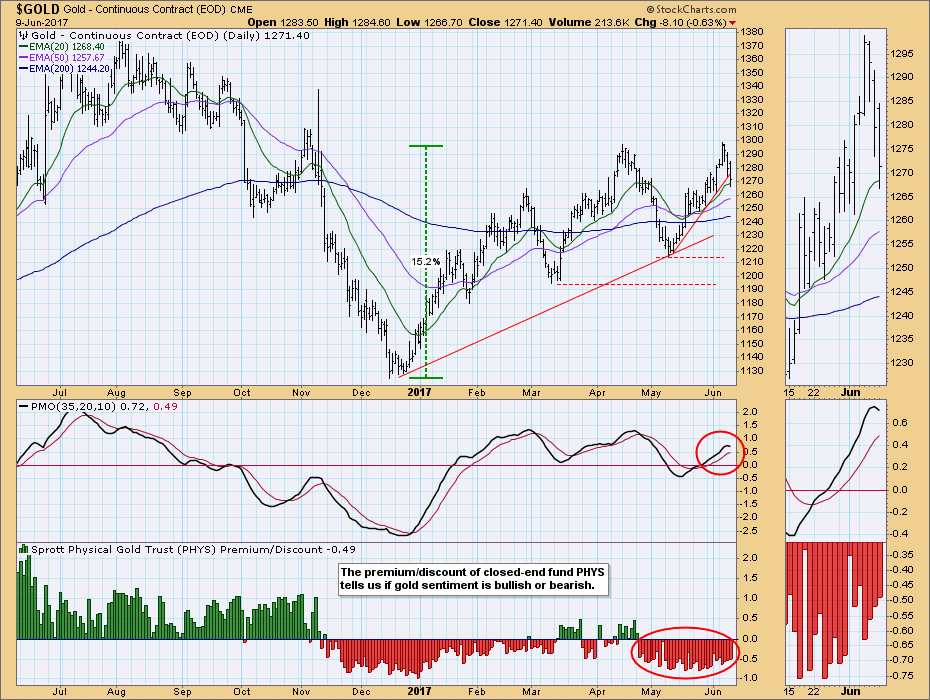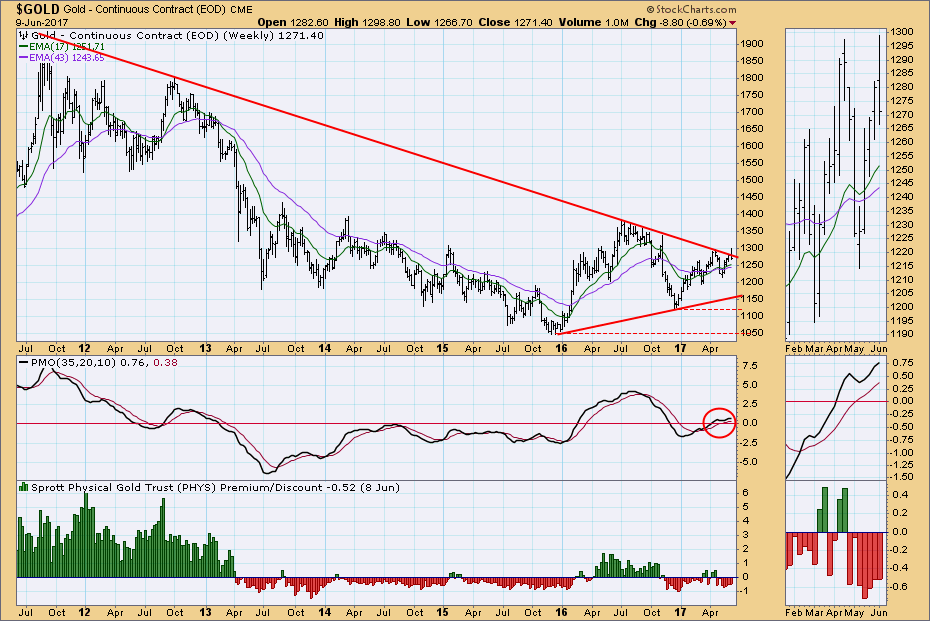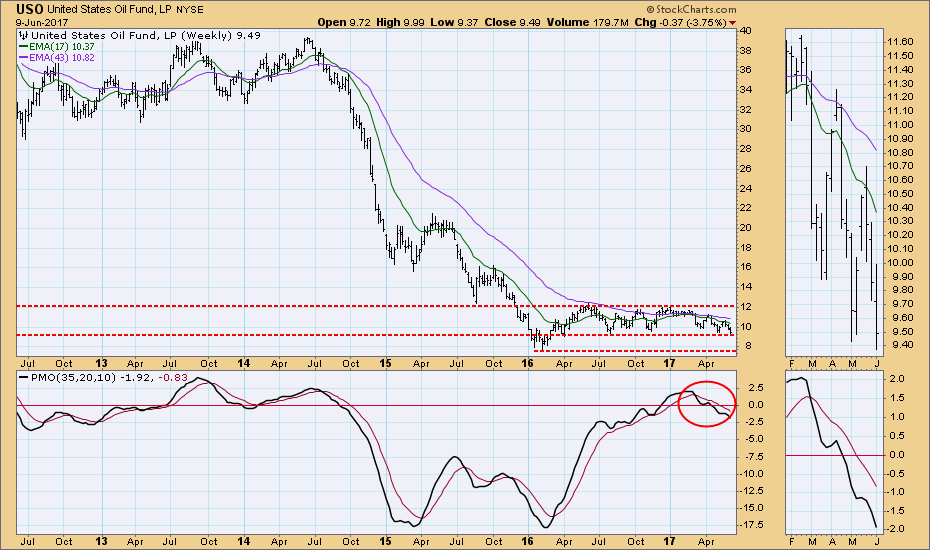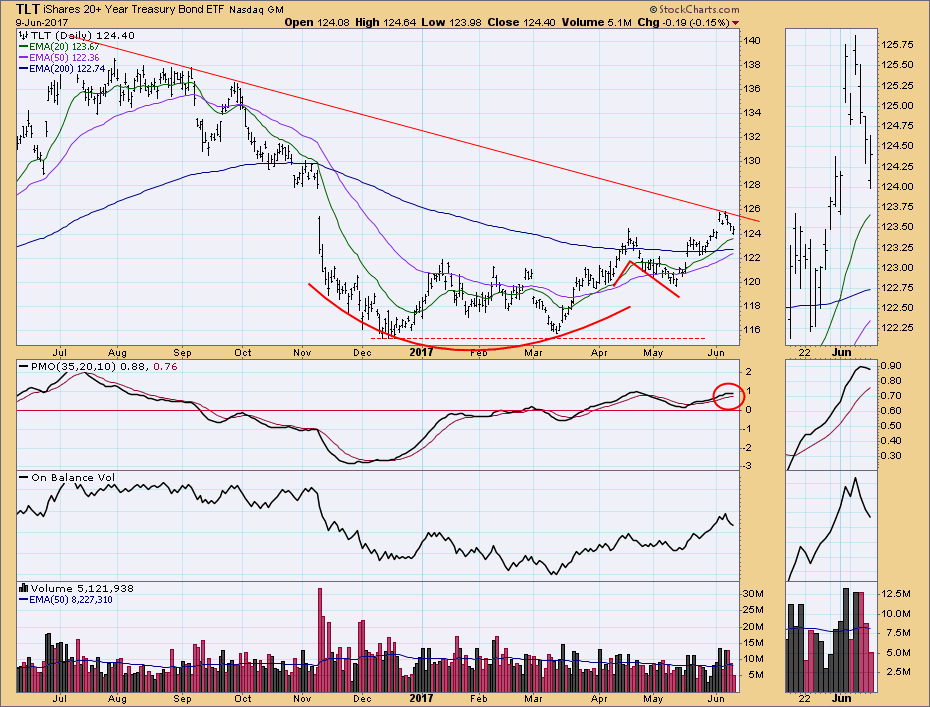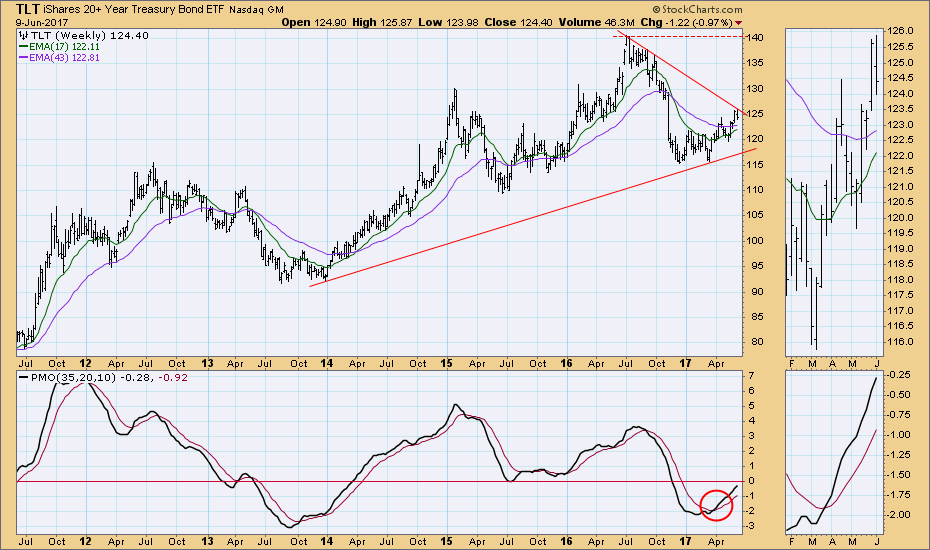
Last week I wrote: ". . . the spike in S&P 500 New Highs makes me think that the market may be on the verge of another consolidation or correction that could last several weeks." I still think that outlook is viable, based upon this week's price action. The market formed a short flag the first four days of this week, and while price broke out of the trading range on Friday, the breakout failed and price actually broke down through the bottom of the trading range. Price finally settled back inside the trading range, but it makes one wonder if this was a blowoff setting up a correction? Let's look deeper into the technical condition of the market.
The DecisionPoint Weekly Wrap presents an end-of-week assessment of the trend and condition of the stock market (S&P 500), the U.S. Dollar, Gold, Crude Oil, and Bonds.
STOCKS
IT Trend Model: BUY as of 11/15/2016
LT Trend Model: BUY as of 4/1/2016
SPY made new, all-time highs intraday, but couldn't hold them. It also broke down through the bottom of the short-term trading range, but it couldn't get a selloff going either. The daily PMO topped, so their could be more weakness next week, but the PMO is not so overbought that it cries for correction.
On the weekly chart SPY is hugging the top of a rising channel and it is well above the cyclical bull market rising trend line.
Short-Term Market Indicators: These indicators have fallen into the neutral zone, but they can accommodate continued price decline.
Intermediate-Term Market Indicators: The ITBM (breadth) and ITVM (volume) are rising, but just narrowly. Since the PMO has topped, they will fall if weakness persists.
Conclusion: The overriding context is that we are in a cyclical bull market within a longer-term secular bull market. The cyclical bull started in February 2016, and a textbook guestimate of when it will finally top would be August 2018. This is based upon the two-and-a-half year template for cyclical bull markets, but it is only a rule-of-thumb. As I wrote last week, I think the market may be on the verge of another correction or consolidation that could last several weeks. That outlook still stands. Price is well above the 200EMA and primary trend line, and the market needs to bleed off some of that excess. Now would be a nice time for that to happen, but the fact is that this condition has existed since February.
DOLLAR
IT Trend Model: NEUTRAL as of 3/21/2016
LT Trend Model: SELL as of 5/24/2017
Although I had my doubts last week that UUP would successfully complete a double bottom, it rallied on Wednesday, and all that is needed to complete the double bottom is for price to break above the confirmation line drawn across the top between the two bottoms. The daily PMO bottomed and crossed up through the signal line, and I consider this to be a credible PMO BUY signal.
The weekly chart is still negative and it will take continued positive action to effect some improvement. The 17EMA has crossed down through the 43EMA, but when price is moving sideways, as it has been for two years, EMA crossovers can be a signal that the trend that caused the crossover is about to reverse. (See the two crossovers in 2016.)
GOLD
IT Trend Model: BUY as of 5/22/2017
LT Trend Model: BUY as of 4/12/2017
I recently referred to gold's price advance as 'tortured,' and this week we got another fine example of this ordeal. After a nice follow-through on the prior week's advance into Tuesday, gold gave back enough to wipe out the gains and turn the daily PMO down. Shares of the Sprott Physical Gold Fund (PHYS), a closed-end fund that owns physical gold, continued to sell at a discount, indicating that bearish sentiment for gold is holding firm. To clarify, sentiment needs to turn modestly bullish to confirm and raise confidence in any price advance. Sentiment becomes a contrarian tool when bullish/bearish sentiment reaches extreme levels, such as can be observed on the left side of the weekly chart below.
The weekly chart shows that gold was finally able to break up through the long-term declining tops line drawn from the 2011 all-time highs. Unfortunately, gold finished the week below that line. I have decided not to take this too literally, and I will persist in my belief that the overall trend will remain up, albeit not without some torture.
CRUDE OIL (USO)
IT Trend Model: NEUTRAL as of 3/8/2017
LT Trend Model: SELL as of 3/9/2017
USO bounced on Tuesday, but it immediately crashed on Wednesday. It is currently finding support at the same level as the May lows.
The weekly chart shows that USO has settled upon the support from the bottom of the longer-term trading range. Chances of that support holding are not high, since the weekly PMO is still falling below its signal line.
BONDS (TLT)
IT Trend Model: BUY as of 3/31/2017
LT Trend Model: SELL as of 11/17/2016
TLT price was turned back from the declining tops line drawn from the 2016 top, but that is the normal expectation before another breakout attempt is made. The bad news is that the daily PMO has topped, meaning that the current pullback could last longer, like the one in April and May.
On the TLT weekly chart the weekly PMO is above the signal line and is moving higher. The long-term picture looks positive.
**Don't miss the DecisionPoint Alert Daily Commentary! Go to the "Notify Me" box toward the end of this blog page to be notified as soon as it is published at the end of the market day.**
Technical Analysis is a windsock, not a crystal ball.
Happy Charting!
- Carl
NOTE: The signal status reported herein is based upon mechanical trading model signals, specifically, the DecisionPoint Trend Model. They define the implied bias of the price index based upon moving average relationships, but they do not necessarily call for a specific action. They are information flags that should prompt chart review. Further, they do not call for continuous buying or selling during the life of the signal. For example, a BUY signal will probably (but not necessarily) return the best results if action is taken soon after the signal is generated. Additional opportunities for buying may be found as price zigzags higher, but the trader must look for optimum entry points. Conversely, exit points to preserve gains (or minimize losses) may be evident before the model mechanically closes the signal.
Helpful DecisionPoint Links:
DecisionPoint Shared ChartList and DecisionPoint Chart Gallery
Price Momentum Oscillator (PMO)
Swenlin Trading Oscillators (STO-B and STO-V)

